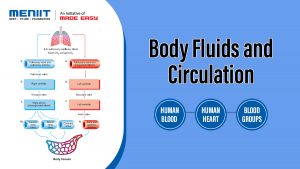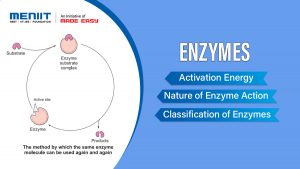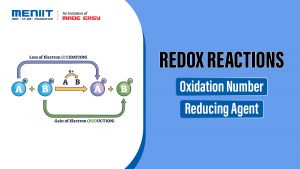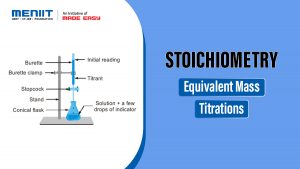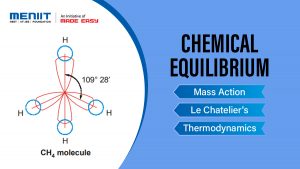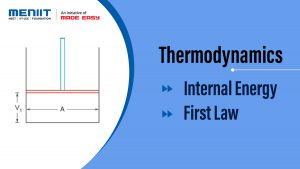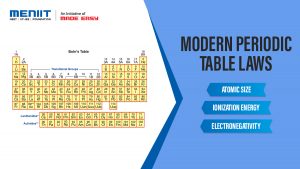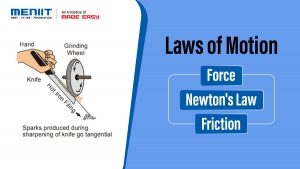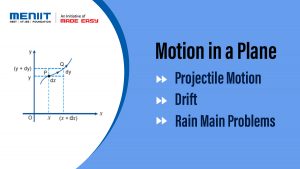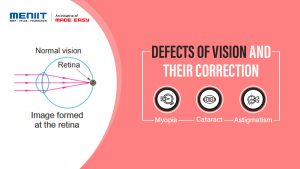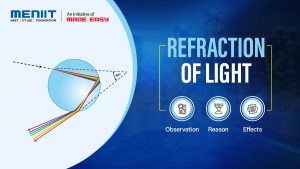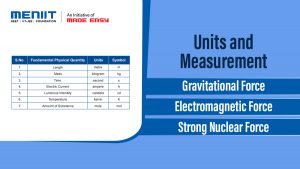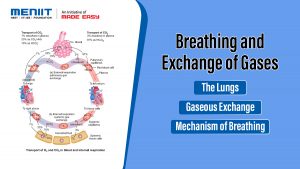Cell Cycle And Cell Division
INTRODUCTION : CELL CYCLE AND CELL DIVISION
Growth and reproduction are characteristics of cells, indeed of all living organisms. All cells reproduce by dividing into two, with each parental cell giving rise to two daughter cells each time they divide. These newly formed daughter cells can themselves grow and divide, giving rise to a new cell population that is formed by the growth and division of a single parental cell and its progeny. In other words, such cycles of growth and division allow a single cell to form a structure consisting of millions of cells. The sequence of events by which a cell duplicates its genome, synthesises the other constituents of the cell and eventually divides into two daughter cells is termed cell cycle.
PHASES OF CELL CYCLE
Cell cycle is defined, as the stage or sequence of events through which a cell passes from one cell division to other cell. A typical eukaryotic cell cycle is illustrated by human cells in culture. These cells which divide once in approximately every 24 hours. However, this duration of cell cycle can vary from organism to organism and also from cell type to cell type. Time period for G1, S, G2 and M-phase is species specific under specific environmental conditions e.g., 20 minutes for bacterial cell, 8-10 hours for intestinal epithelial cells, onion root tip cells may take 20 hours. 24 hours for human cells and 90 minutes for yeast cells to complete these phases of cell cycle.
The cell cycle is divided into two basic phases:
- Interphase
- M Phase (Mitosis phase)
Interphase
It is the period between one M-phase to other M-phase. This phase is highly variable and during most of the time cell remains in interphase. The interphase lasts more than 95% of the duration of cell cycle.
It is also called inter-mitosis or resting stage. Although apparently inactive, the nucleus and cytoplasm remains very active metabolically as well as synthetically so it’s an active phase of synthesis. Therefore, it is called as preparatory phase.
Interphase is further Divided into three phases:
- G1 phase/Post mitotic/Pre-synthetic phase/Gap-I phase.
- S-phase/Synthetic phase.
- G2 -phase/Pre mitotic/Post synthetic phase/Gap-II phase.
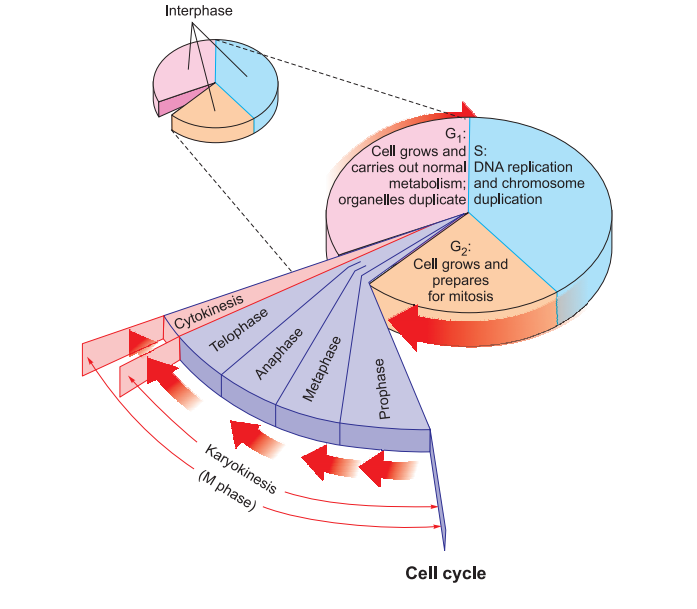
M-Phase/Dividing Phase
- It is the phase of actual cell division.
- It is divided into two phases – karyokinesis (division of nucleus) and cytokinesis (division of the cytoplasm).
- It is of three types – Amitosis, Mitosis and Meiosis.
MITOSIS
Definition: Mitosis involves the exact replication of parent cell followed by its division into two daughter cells which are identical and contain the same number of chromosomes as found in parent cell, so also called as equational division. Also called as Somatic cell division as it occurs in the somatic cells of plants (meristematic tissues) and animal body.
In animals, mitotic cell division is only seen in the diploid somatic cells. Against this, the plants can show mitotic divisions in both haploid and diploid cells.
Process: Replication and distribution of chromosomes is known as karyokinesis while cytoplasmic division is called as cytokinesis. Simply we can say that nuclear division coincides with karyokinesis and cytoplasmic division with cytokinesis.
Karyokinesis: Though for convenience karyokinesis has been divided into four stages of nuclear division, it is very essential to understand that cell division is a progressive process and very clear-cut lines cannot be drawn between various stages.
It comprised of four phases namely Prophase, Metaphase, Anaphase and Telophase.
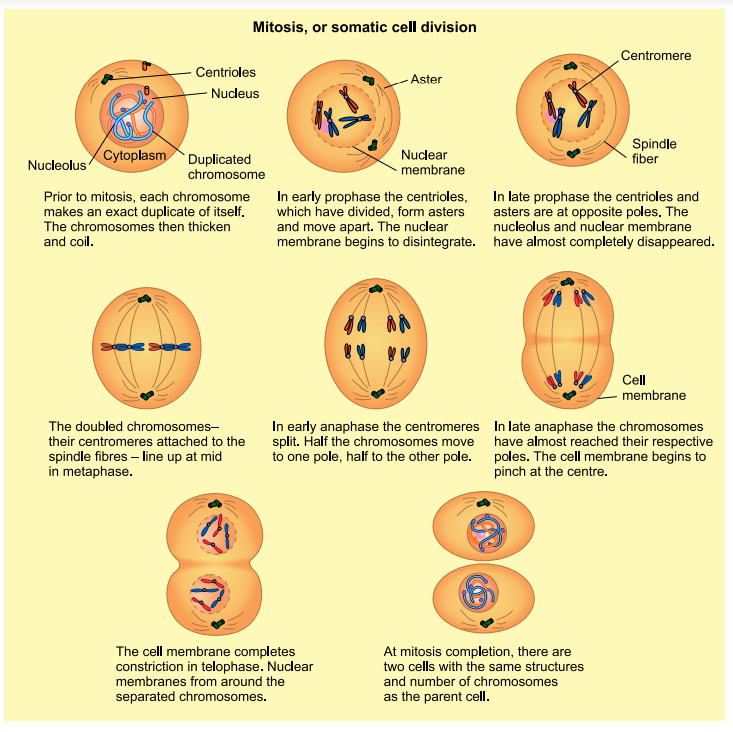
CYTOKINESIS
Definition: Cytokinesis is the division of cell cytoplasm into two separate cells. It usually occurs along with the formation of daughter nuclei after the nuclear division. It differs in plant and animal cells. At times, cytokinesis do not follow karyokinesis, as a result a multinucleate condition arise, such cell is called coenocyte or syncytium (e.g., liquid endosperm in coconut).
Cytokinesis or cell cleavage differs considerably in animal and plant cells
- In Animals, cytokinesis occurs by constriction & furrow formation. Microfilaments arrange on equator to form midbody and at the periphary of the equator a contractile ring is formed that is made up of actin and myosin protein. Due to interaction between actin and myosin ring contract, thus a furrow forms from outside to inside in cell. Furrow deepens continuously and ultimately a cell divides into two daughter cells. In animals cytokinesis occurs in centripetal order.

- In Plants, cytokinesis takes place by cell plate formation because constriction is not possible due to presence of the rigid cell wall. Many golgi vesicles and spindle microtubules arrange themselves on equator to form phragmoplast. Fragementes of ER may also deposit in phragmoplast. Membrane of golgi vesicles fuse to form a plate like structure called cell plate. Golgi vesicles secret calcium and magnesium pectate. Further cell plate is modified into middle lamella. In plants, cytokinesis occurs in centrifugal order (cell plate formation is from center to periphery).
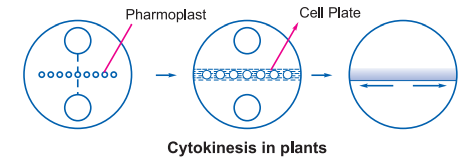
MEIOSIS
Definition: Meiosis (GK. MEIOUM OR MEIO- TO LESSEN) occurs in germinal cells. It’s a kind of cell division in which, the number of chromosomes become half the number of parent chromosome after cell division. Therefore, a single division gives rise to four daughter cells rather than two. We can say that diploid number becomes haploid after cell division.
Meiosis is found in both animal as well as plant cells. Cells which undergo meiosis are called as meiocytes. In animal cells it seen in primary gametocytes whereas in plants it is seen in sporogonial (sporocyte, microsporocyte or megasporocyte).
Process: Meiosis is completed in two steps, Meiosis I and Meiosis II. Each of them is further divisible into karyokinesis and cytokinesis. Karyokinesis further has different stages as in mitosis.
| Meiosis I | Meiosis II |
|---|---|
| Prophase I | Prophase II |
| Metaphase I | Metaphase II |
| Anaphase I | Anaphase II |
| Telophase I | Telophase II |
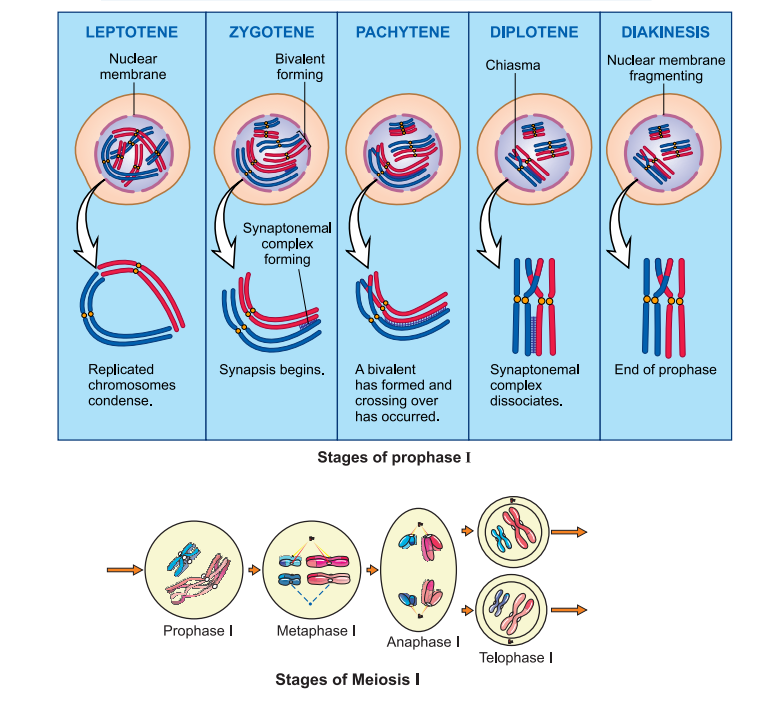
Interphase / Interkinesis: It is metabolic stage between telophase of meiosis I and prophase of meiosis II. Chromosomes are elongated but chromatin is not formed. Protein and RNA synthesis may occur. Centrosomes or centriole pairs undergo replication in animal cells. However, there is no DNA synthesis. It is important for bringing true haploidy (haploidy of DNA) in daughter cells. Interphase I remains present in some of the animal species whereas absent from others. Sometimes even telophase remains absent so the cell directly enters into prophase II after anaphase I due to this nuclear membrane do not form. Whereas in those cells, where telophase I is there followed by interphase I nuclear membrane forms. If interphase is present its of a very small duration.
Homotypic Division/Meiosis II
Typically shorter than meiosis I. This division maintains the total number of chromosomes produced at the end of meiosis I, so is called as homotypic or equational division.
- Meiosis II is initiated immediately after cytokinesis, usually before the chromosomes have fully elongated. The chromosomes again become compact.
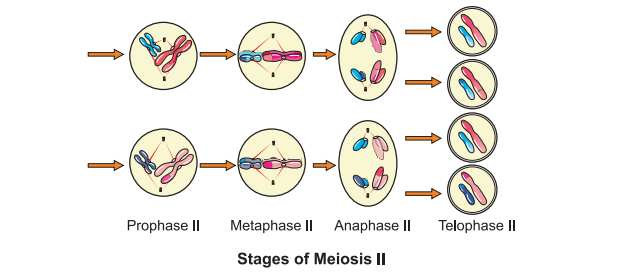
Cytokinesis follows resulting in the formation of tetrad of cells i.e., four haploid daughter cells.

